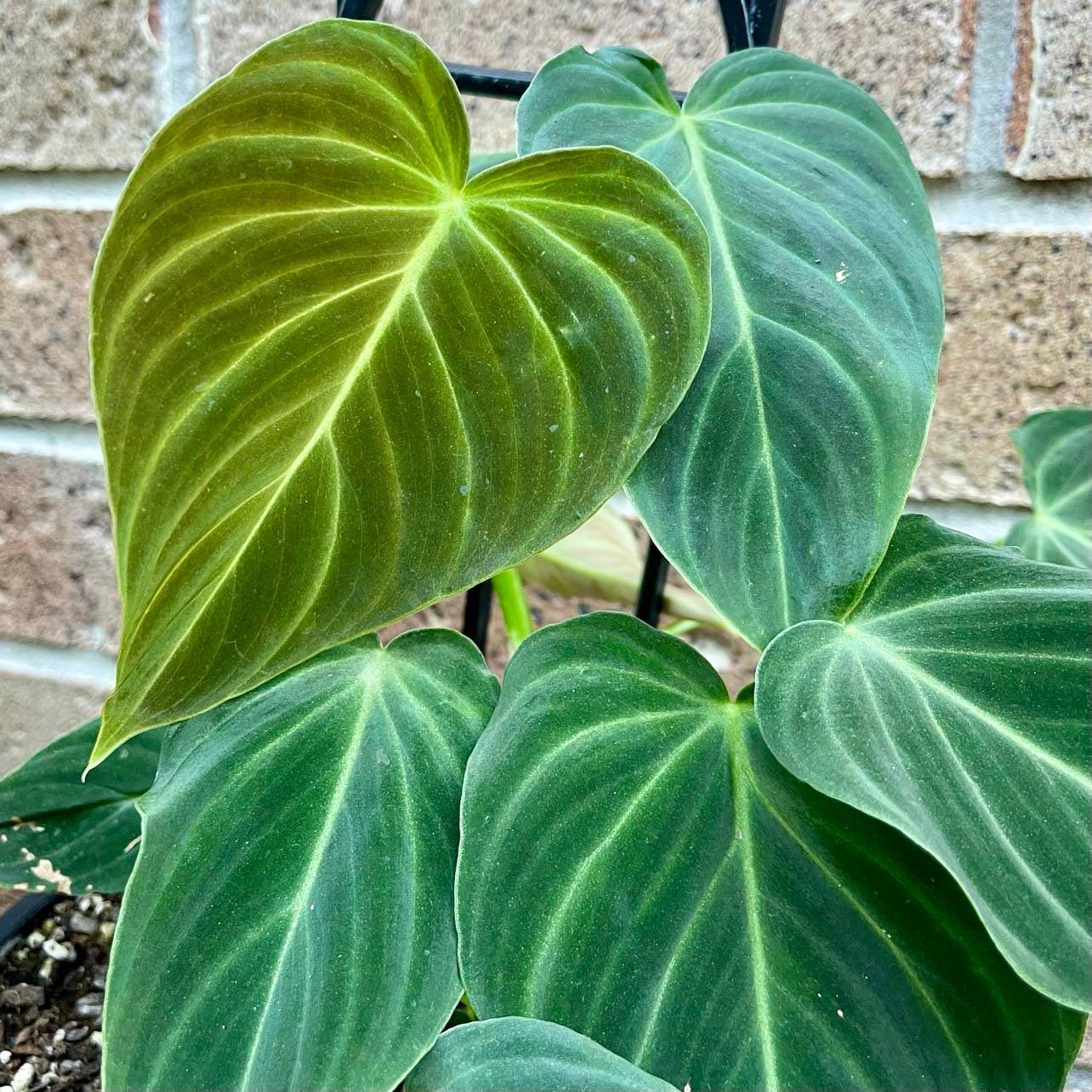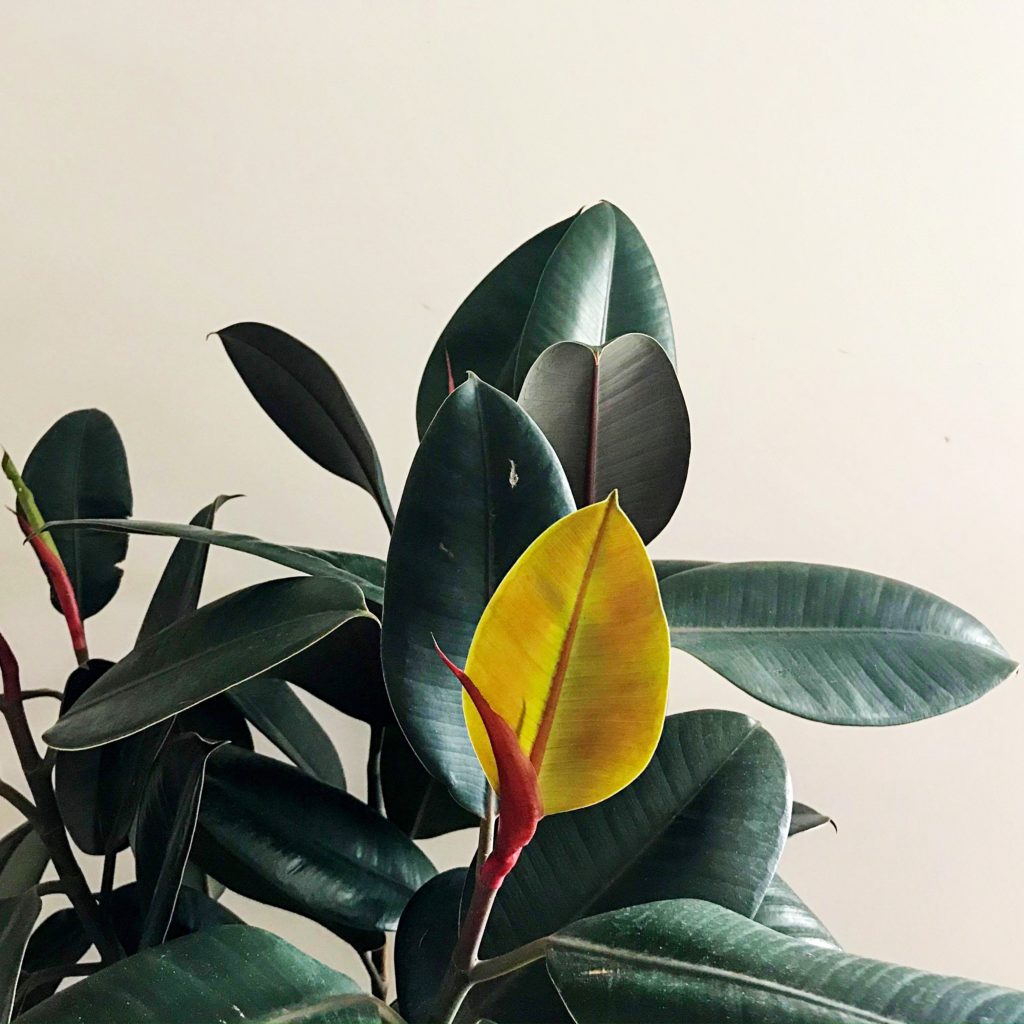Philodendron Verrucosum x Melanochrysum a.k.a Philodendron Splendid
The Philodendron Splendid, also known as Philodendron Verrucosum x Melanochrysum, is a hybrid plant. This plant is a rarer one that produces large velvety heart shaped leaves with white/green veins. The Philodendron Splendid is a trailing plant that is fairly easy to care for, in this guide we will give you all the information you’ll need for caring for Philodendron Splendid.
This plant is part of the Araceae family and native to rainforests of Ecuador. Since it’s native to rainforests, they like humidity, warm temperatures and bright indirect light. Unfortunately, this plant is toxic and should be kept away from pets and children.

Philodendron Splendid Quick Overview
| Full Size | 4-6 feet |
| Light | Bright indirect light |
| Temperature | 55ºF-80ºF (12ºC-26ºC) |
| Humidity | Above 60% |
| Cost | $$ |
| Care Level | Easy |
| Toxicity | Toxic |
Size
The mature size of a Philodendron Splendid is between 4-6 feet in length. A mature leaf can reach up to 1 foot in width and 2 feet in length. In the correct conditions, this plant can be quite fast growing. You should provide a moss pole for the plant to climb and help encourage those larger leaves.
This plant doesn’t require much pruning however, you can cut it back if it becomes too large and you can propagate those cuttings. Add the cuttings to the existing plant for a bushier look or pot them up separately for new plants.
Light Requirements
Philodendron Splendid will grow best when in bright indirect lighting. Providing at least 6-10 hours of light a day will encourage those beautiful large leaves and keep your plant happy and healthy. This plant can tolerate some direct sunlight but you do need to be careful as the harsh sunlight can scorch the foliage.
Browning edges on the leaves are a sign of too much sunlight. Morning sunlight is best when the suns rays aren’t as harsh. A sign that your Philodendron Splendid isn’t receiving enough light is smaller leaves and a leggy stem.
If your plant is housed in a spot where it receives direct sunlight, adding a blind or curtain to your window will help to defuse the harsh sunlight to avoid burning the plants foliage. Alternatively, if you can’t seem to find that perfect spot in your home, you can always use grow lights.
Just like direct sunlight, if your plant is sitting too close to the grow lights, they will burn the foliage. Keeping a safe distance of at least 60cm between your plant and the light will avoid any trouble.
Temperature
The ideal temperature for growing Philodendron Splendid is between 55ºF-80ºF (12ºC-26ºC). It’s best to try and avoid fluctuating temperatures and cold drafts from doors, windows and air conditioning.
This plant doesn’t tolerate cold temperatures and should be moved to a warmer spot in your home. If the temperature drops below 55ºF (12ºC), your Philodendron Splendid may stop growing, get browning and/or yellowing leaves and in severe cases plant death.
Humidity
Philodendron Splendid will thrive when kept in an average-high (above 60%) humidity environment. However, this plant can also tolerate humidity levels around 50%. If your plant is housed in a spot where the humidity level is quite low, you may notice curling leaves, brown leaf tips and edges and/or yellowing leaves.
Providing a high humidity for your plants will encourage bigger and healthier growth. There are a few thing you can do that can help bump up the humidity in your home. The things you can try are:
- Misting your plants
- Pebble trays
- Grouping plants together
- Humidifier
Watering Requirements
Philodendron Splendid like to be moderately watered. This plant likes to have a slightly moist soil. How often you need to water will change throughout the seasons when the temperature and amount of sunlight is changing.
Before watering your plant, check the top 1-2 inches of soil with your finger to feel if the soil is still moist. If the soil is dry, you should give your plant a drink. A sign that your Philodendron Splendid needs more water is wilting and drooping leaves.
Although Philodendron Splendid like a slightly moist soil, you need to be cautious of over-watering. Excess water to the soil can cause it to become waterlogged which can start rotting the roots.
Rotted roots can’t take in any water or nutrients for the plant which can cause fungus issues, pest problems and root-rot. Signs that you may have over-watered your Philodendron Splendid are yellowing leaves and bacterial leaf spot. You should remove all the affected leaves to help stop it spreading to the rest of the plant. If left untreated, leaf spot can kill your plant.
Fertilizing requirements
You should fertilise your Philodendron Splendid monthly during Spring and Summer. There’s no need to fertilise during the cooler months when the plant isn’t actively growing. Fertilising your plants gives them the essential nutrients they need for promoting and maintaining new and healthy growth. Applying fertiliser when the plant isn’t actively using up the nutrients in the soil can cause salt build up and root burn.
The best fertilizer to use for Philodendron Splendid would be a balanced all purpose fertilizer diluted to half strength. You can also use a slow release fertilizer instead, following the directions on the packet. Another fertilizer option would be one that is high in nitrogen.
The Nitrogen helps to increase the leaf size and produce an overall healthy, larger plant. Using leaf and bark matter added to the soil can also be used as a good extra organic food.
Another thing you need to be cautious of is over-fertilising. Over-fertilising your Philodendron Splendid can burn the roots and foliage. Brown curling leaves can be a sign of over-fertilising. If you think you’ve over-fertilised your plant you can either change the soil or rinse the fertiliser out. The water colour will change once the fertiliser has been rinsed out.
For more information on fertilizing houseplants see our guide on different types of fertilizer for indoor plants.
Soil Requirements
Philodendron Splendid like to be in a well draining and aerated soil that is rich in organic matter. To achieve a well draining soil, you can add orchid bark, perlite and peat moss to a potting soil to help create drainage and aeration. Air flow is important in potting soil as it allows the plants roots to breath. Not having enough oxygen to the roots can cause them to eventually start rotting.
Adding other organic materials such as coco coir, mulch chunks and coconut husk to the soil will help restrain moisture. Philodendron Splendid like to be kept in a moist soil so it’s important to use ingredients that will help keep moisture in the soil without making it soggy. Adding garden compost will add more richness to the soil which this plant will love.
Diseases & Pests
The common pests you may encounter on your Philodendron Splendid are Aphids, Mealybugs, Spider Mites, Thrips and Scale. The most common diseases you may encounter are root-rot and bacterial leaf spot.
Related: 3 Essential Oils to Keep Spider Mites at Bay
The best thing you can do when it comes to pests on houseplants is to try and avoid any pest infestations from starting. There are a few things you can do that will assist in preventing any pest infestations and these things are:
- Checking new plants for pests or isolating new plants for up to a week.
- Check your plants every few days for pests.
- Trim off any dead or dying leaves.
- Wipe down leaves if you notice them getting dusty.
- Keeping your plants healthy. A healthy plant will be able to handle an infestation better than those that aren’t as happy.
- Isolate any plants that have pests.
Following this will assist in keeping pests away as well as catch them early on before any severe infestations are able to start. Keeping plants healthy and in the correct living environments can help to deter any pests from invading your plants.
Toxicity
Philodendron Splendid contain Calcium Oxalate Crystals which is toxic to both humans and pets if ingested. If any part of the plant is ingested, symptoms may include swelling of the oesophagus, GI tract and mouth.
If ingested by pets, the symptoms may include vomiting, lack of appetite, drooling and pawing at the mouth. Plant should be kept out of reach of small children and pets.



